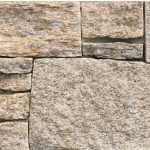Morocco is known for its rich history, vibrant culture, and stunning architecture. One of the key elements that contribute to the beauty and allure of Moroccan architecture is the extensive use of cultured stone. Cultured stone, also known as manufactured stone or faux stone, is a versatile building material that mimics the appearance of natural stone while offering more flexibility in design and installation. In this article, we will explore the history, craftsmanship, and unique characteristics of Moroccan cultured stone.
**History of Moroccan Cultured Stone**
Moroccan architecture has been heavily influenced by various cultures and civilizations over the centuries, including the Romans, Arabs, Berbers, and Moors. These influences have shaped the unique architectural style that is characteristic of Morocco today. The extensive use of stone in Moroccan architecture can be traced back to ancient times when natural stone was the primary building material used in construction.
In more recent history, the development of cultured stone as a building material has allowed architects and builders in Morocco to create intricate designs and elaborate structures that pay homage to the country's rich cultural heritage. The introduction of cultured stone has also made it possible to construct buildings more efficiently and cost-effectively, while still achieving the desired aesthetic appeal.
**Craftsmanship of Moroccan Cultured Stone**
The craftsmanship involved in creating Moroccan cultured stone is a true testament to the skill and dedication of Moroccan artisans. The process begins with carefully selecting high-quality raw materials, such as cement, aggregates, and iron oxide pigments, which are mixed together to create a moldable material that closely resembles natural stone.
https://www.fs-slate.com/what-is-stone-veneer-and-why-should-you-choose/ shape the cultured stone using traditional techniques passed down through generations. These craftsmen have a keen eye for detail and a deep understanding of the intricate patterns and designs that are characteristic of Moroccan architecture. Each piece of cultured stone is meticulously handcrafted to ensure that it meets the highest standards of quality and authenticity.
One of the most remarkable aspects of Moroccan cultured stone is the variety of textures and finishes that can be achieved. From smooth and polished surfaces to rough and weathered finishes, Moroccan cultured stone can be customized to suit a wide range of architectural styles and design preferences. The versatility of cultured stone allows architects and designers to create unique and visually striking facades, walls, and accents that add a touch of elegance and sophistication to any building.
**Unique Characteristics of Moroccan Cultured Stone**
Moroccan cultured stone is renowned for its durability, versatility, and aesthetic appeal. One of the key advantages of using cultured stone in construction is its lightweight nature, which makes it easier to transport, handle, and install compared to natural stone. This lightweight quality also reduces the structural load on buildings, making it an ideal choice for a wide range of applications.
In addition to its practical benefits, Moroccan cultured stone offers a wide range of design possibilities. The material can be molded and shaped into virtually any size or shape, allowing architects and designers to create intricate patterns, motifs, and decorative elements that capture the essence of Moroccan architectural style. Whether used as a cladding material for exterior facades or as a decorative element for interior walls, Moroccan cultured stone adds a touch of sophistication and luxury to any space.
Furthermore, Moroccan cultured stone is highly resistant to weathering, fading, and staining, making it a low-maintenance option for both residential and commercial buildings. The material is also fire-resistant and has excellent thermal insulation properties, which can help improve the energy efficiency of a building and reduce heating and cooling costs.
**Conclusion**
Moroccan cultured stone is a versatile and aesthetically pleasing building material that has become an integral part of the country's architectural heritage. With its rich history, intricate craftsmanship, and unique characteristics, Moroccan cultured stone continues to be a popular choice for architects, designers, and builders seeking to create stunning and enduring structures that reflect the beauty and cultural richness of Morocco. Whether used to create intricate facades, decorative accents, or interior walls, Moroccan cultured stone adds a touch of elegance and sophistication to any building, making it a timeless and enduring choice for modern construction projects.

